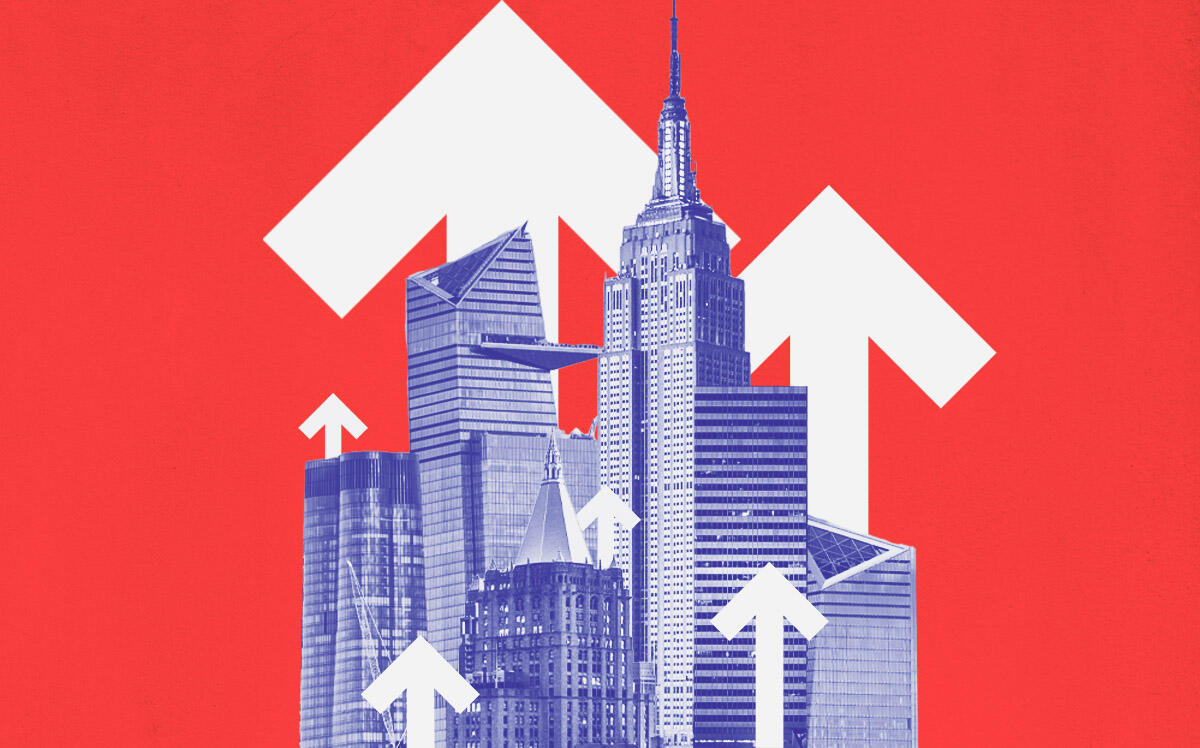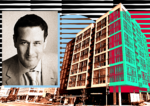 Third Avenue: The land of "leave-behind"
Third Avenue: The land of "leave-behind"
Trending
Manhattan office leasing jumps as availability and rents drop
More than 9.2M sf leased in third quarter, up 28% from last year

Despite continued uncertainty about workers returning to their desks, Manhattan’s office market appears to be gaining momentum.
Office leasing volume surged in the third quarter as the borough’s availability rate dropped to its lowest level in 18 months, according to a report from Colliers.
Tenants leased 9.2 million square feet in the quarter, up 26 percent from the previous quarter and 28 percent from the same period last year. Financial services, insurance and real estate tenants were the top-leasing industries during the quarter, accounting for 47 percent of square footage leased.
Year-to-date leasing volume stands at 24.2 million square feet, an approximately 50 percent climb from last year. Leasing volume this year is on track to outpace last year’s total by 29 percent, according to Colliers.
Manhattan’s availability rate dropped to 16.4 percent, its lowest level since March 2021. The market’s 4.7 percent decline in availability from 17.2 percent in the second quarter was the biggest quarterly drop in availability in eight years.
However, available space is up by about 65 percent since the start of the pandemic, and asking rent averages are down across Manhattan — a sign that office landlords are competing harder on price to secure tenants given work-from-home and economic headwinds.
Read more
 Third Avenue: The land of "leave-behind"
Third Avenue: The land of "leave-behind"
 Where are all the trophy office listings?
Where are all the trophy office listings?
After three straight quarterly increases, Manhattan’s asking rent average dropped by 2 percent to $74.07. It was the first time since December 2020 that the asking rent average dropped in Midtown, Midtown South and Downtown.
Manhattan’s asking rent average remains down close to 7 percent since the onset of the pandemic.
Midtown’s availability rate fell by 1.8 percentage points, or 10.5 percent, year-over-year to 15.3 percent, the neighborhood’s lowest vacancy rate since December 2020. Midtown’s asking rent average dropped marginally to its lowest level in seven years at $78.61.
Tenants signed deals for 4.4 million square feet in Midtown in the quarter, a 46 percent year-over-year increase. The neighborhood’s year-to-date leasing volume of 11.6 million square feet is up 42 percent from last year. Overall supply is up by about one-third since the beginning of the pandemic.
Midtown South’s availability rate dropped to 15.6 percent in the quarter, the neighborhood’s lowest vacancy rate since March 2021. Midtown South’s nearly 1-point decrease in availability from last quarter’s 16.5 percent was its sharpest quarterly drop in eight years. The market’s average asking rent fell for the first time in six quarters, dropping to $79.77 from $81.64.
Roughly 3.46 million square feet was leased in Midtown South, marking its strongest quarter since the end of 2019. Leasing volume jumped by almost one-third from 2.6 million square feet last year. The neighborhood’s year-to-date leasing volume of 9.51 million is up 86 percent from last year. Overall supply, however, is up 97 percent from the start of the pandemic.
It was a dimmer picture for office landlords Downtown, where for the 10th consecutive quarter, the availability rate increased, rising to 20.2 percent. The neighborhood’s asking rent average fell for the third consecutive quarter to $58.68. Downtown’s asking rent average is down almost 11 percent since the onset of the pandemic.
Downtown’s leasing activity more than doubled from the previous quarter, as tenants scooped up 1.31 million square feet. However, leasing volume declined year-over-year by 17.2 percent from 1.58 million square feet. About 21.67 million square feet remains available, which is up 10 percent from last year and 98 percent since early 2020.
Notable leases signed in Manhattan during the third quarter included Franklin Templeton nabbing 347,000 square feet at SL Green’s One Madison Avenue, and KPMG and D.E. Shaw snapping up 733,000 square feet at Brookfield Properties’ Two Manhattan West.
The return-to-office outlook in Manhattan is mixed. A post-Labor Day surge saw attendance at the city’s office buildings reach pre-pandemic levels in mid-September, according to Kastle Systems, which tracks card-swipe data.
But that surge appears to have cooled. After reaching a pandemic-high of 46.6 percent last month, the city’s occupancy rate dropped to 43.5 percent for the last week in September, according to Kastle.




